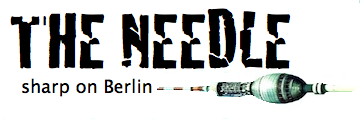‘One of them grabs my wrists and jerks me along the corridor. Then the other is pulling as well, his hand on my throat so I can no longer scream. I no longer want to scream, for fear of being strangled. They’re both tearing away at me, instantly I’m on the floor…’
So writes the anonymous author (most likely the journalist Marta Hillers) of Eine Frau in Berlin, in her memoir of late April-June 1945 about her experience of mass rapes committed by the Red Army. After the fall of Berlin, 200 000 ‘Russian Babies’ were born in the Soviet Zone of Germany. That is an official number, and does not include the many abortions.
Russian soldiers entered the bunkers and basement shelters meant to protect Germans against the enemy. They looked for girls and women. Fat was good. Young was good. Soldiers in the Red Army had fought continuously, without leave or R&R. They were angry and battle-worn, shocked to arrive on enemy territory and find women who were relatively well fed and still attractive compared to the starved and brutalised peoples farther East.
Stalin shrugged off the mass rapes which occurred in those first weeks of Soviet occupation, asking is one couldn’t ‘understand the soldier who has gone through blood and fire and death, if he has fun with a woman or takes his trifle?’
The author of the memoir describes how the men searched the basements and bunkers for women. The soldiers didn’t like stairs. They didn’t know about crawl spaces, false ceilings, where families stashed their teenagers. Those who lived on the main floor were the ones most at risk. The soldiers defecated in the hallways, urinated against living room walls, and scoured the most accessible parts of the shelters, shone their torches in the faces of the women huddled there, and took their choice. Eventually, an economy developed between some soldiers and women, for food and protection. Women were raped multiple times, sometimes with their husbands standing by.
When German soldiers return from the front, they simply did not want to hear about the humiliations at home. Hiller’s story was published once in German, in Switzerland, in the late fifties, and then remained out of print until 2002, a year after the author’s death. It, in the words of one post-war review, ‘besmirched the name of German women’. Women were not allowed to articulate the horrors of occupation until very recently. This national trauma was, for two generations, left unspoken.
Bunkers, flak towers, great immovable edifices of concrete dot the German capital. The one on Pallasstraße in Schöneberg, adjacent to where a great sports arena once stood (hence its name: the Sports-Palace Bunker), was the largest. A post-war apartment block had to be built around it, the edifice was so effectively armed against destruction –a monumental rock built by forced labour.
And who built these bunkers? The Russians.
There is an element of reversal here. Soviet prisoners of war and captured civilians, between 1943 and 1945, built this shelter. Was it built with the idea that it would truly provide protection against the Red Army once it arrived? Or had the planners thought simply about an attack from the air? And were the Red Army soldiers aware of the humiliations endured by their own people as they laboured to build this place of protection for 5000 German civilians? Did they have this in mind as they visited their humiliations on the German women inside?
I walk by these places today and think of the horror that built them, the horror they were meant to keep out, and then the horror which ultimately entered their darkened and narrow stairwells.
References:
Anonymous, Eine Frau in Berlin. Frankfurt: Eichborn Verlag AG, 2002.
Judt, Tony, Postwar: A History of Europe since 1945. London: Penguin, 2005
View Larger Map


Few can look at history and see both sides . You are one of them ! Keep up the good work !